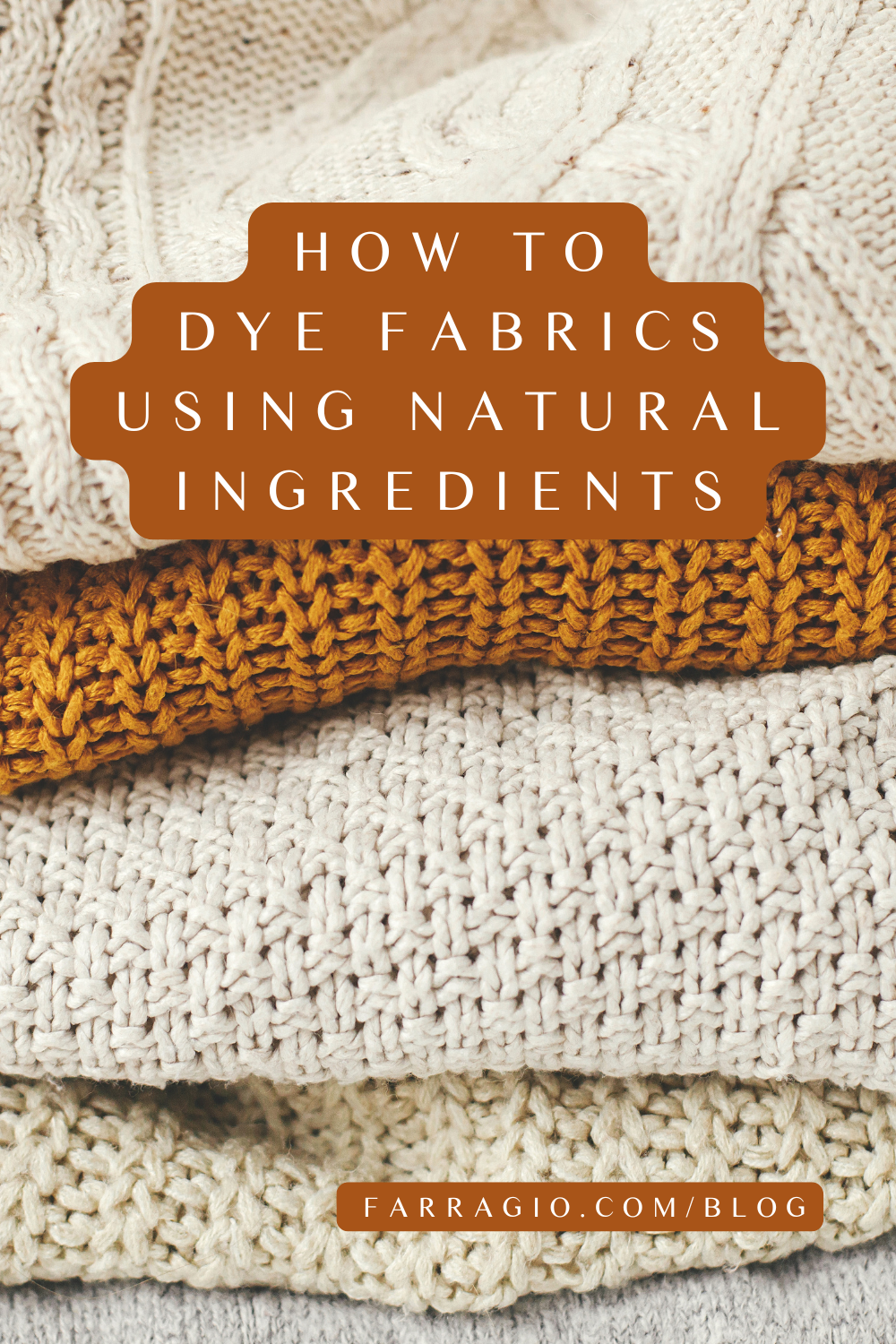How to Dye Fabrics Using Natural Ingredients
Clothes, towels, and other fabric items often lose their vibrancy over time—or maybe that blouse you love isn’t quite the shade you want. Commercial fabric dyes may seem like the easy solution, but they release harsh chemicals into our water systems and leave chemical residues on clothes that touch your skin.
The good news? You can achieve beautiful, eco-friendly colors with natural fabric dyes—using items you already have in your refrigerator or pantry.
Why Choose Natural Fabric Dye?
Natural dyes are safer for your health, better for the planet, and a creative way to give new life to old fabrics. Instead of relying on synthetic, chemical-heavy options, you can enjoy the art of dyeing with ingredients you already use every day.
Common Ingredients for Natural Fabric Dye
Here are some easy, effective natural dyes you can try:
Coffee – Creates rich, warm browns
Tea – Produces earthy beige and tan shades
Wine – Adds deep red or purple tones
Beet juice – Perfect for pinks and reds
Pomegranate juice – Offers a natural reddish tint
Turmeric powder – Provides a vibrant golden yellow
With a little imagination, the possibilities are endless. Recently, I dyed plain white dish cloths using turmeric powder, and the results were stunning. Below, I’ll walk you through the step-by-step process.
Important Tips Before You Begin
Best fabrics: Natural fibers like cotton, linen, silk, and wool absorb dye best.
Protect yourself: Natural dyes stain just like commercial ones—use gloves, an apron, and tongs.
Wash with care: Freshly dyed fabrics may bleed color. Wash separately or with dark items for the first few washes.
Step-by-Step Instructions for Natural Fabric Dyeing
Prepare the fabric:
Remove visible stains.
Pre-wash in warm, soapy water without fabric softener to eliminate finishes that block dye absorption.
Make the dye bath:
Fill a large stock pot with water.
Add your chosen ingredient (¼ cup to 2 cups depending on desired strength).
Add ¼ cup salt (for cotton/linen) or ¼ cup vinegar (for silk, wool, or nylon).
Stir in ¼ teaspoon dish detergent to help the dye absorb evenly.
Simmer the dye:
Bring the pot to a simmer, stirring occasionally.
Watch closely so it doesn’t boil over.
Pre-wet the fabric:
Soak your fabric in warm water before dyeing.
Dye the fabric:
Remove the pot from heat.
Using tongs, immerse the item fully in the dye bath.
Cover and allow to cool completely, stirring occasionally for even coverage.
Rinse and wash:
Remove with tongs and place directly into the washing machine.
Wash twice with detergent on hot with an extra rinse cycle.
Dry:
Tumble dry on high heat to help set the color.
Frequently Asked Questions About Natural Fabric Dyes
What is the best natural dye for fabric?
Red-based foods like beets and wine tend to give the most vibrant results.
Do natural dyes wash out?
Yes, natural dyes can fade faster than synthetic dyes. To preserve color:
Hand wash or use a delicate cycle
Wash with cold water and gentle detergent
Air dry when possible
What kind of vinegar works best?
Always use white vinegar when dyeing fabrics—it helps the color set more effectively.
Final Thoughts
Learning how to dye clothes naturally is a fun, sustainable way to refresh your wardrobe and household fabrics. With simple ingredients like coffee, turmeric, and beet juice, you can create unique colors while avoiding harmful chemicals. Whether you want subtle earthy tones or bold, vibrant shades, natural fabric dyeing is an eco-friendly craft worth trying.
Pin to Pinterest
Pin this gem to your Pinterest so it’s just a click away when you need it!

